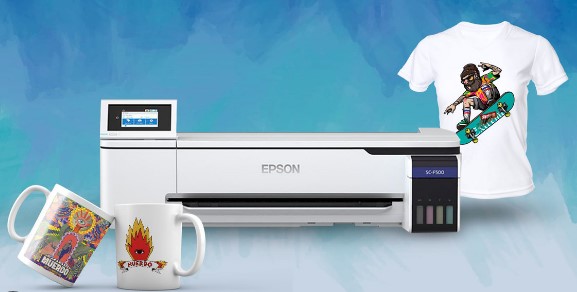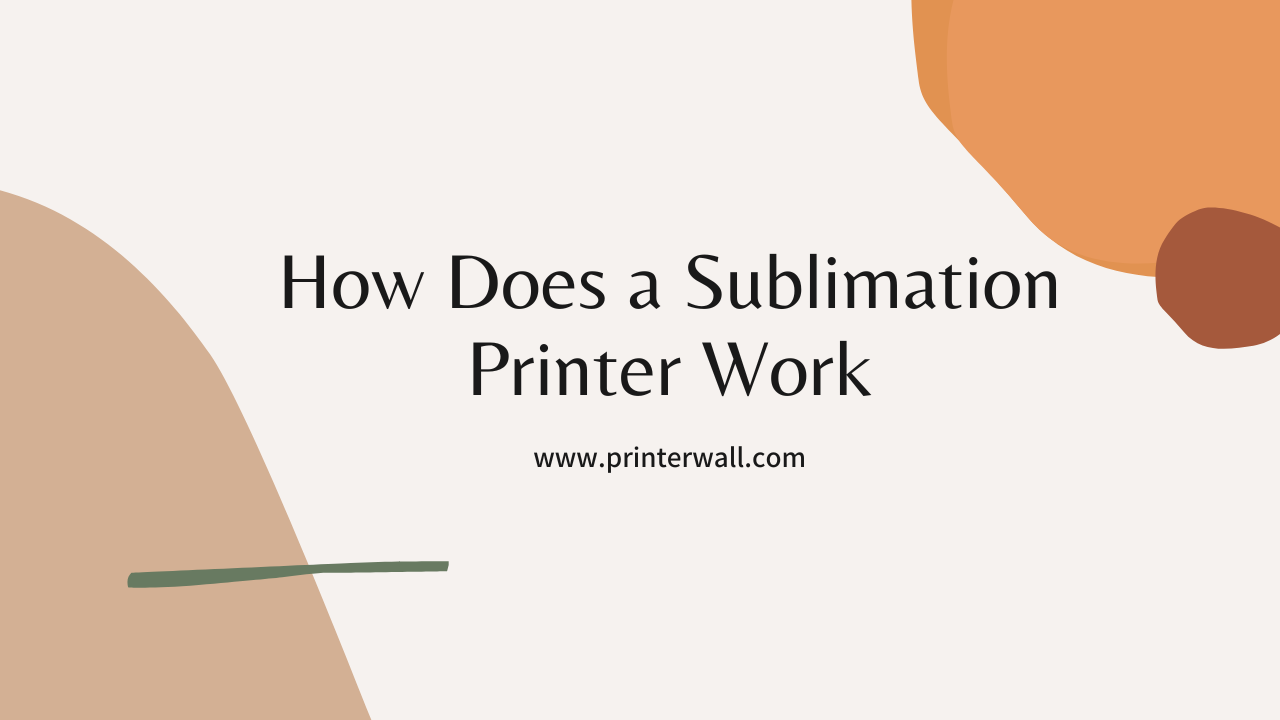Sublimation printing is a popular printing technique used in a variety of industries, such as apparel, signage, and product customization. It is a digital printing process that uses heat to transfer dye onto a variety of materials, including paper, fabrics, ceramics, and plastics. In this article, we will discuss how a sublimation printer works and the different types of materials that can be used with this printing technique. We will also explore the advantages and disadvantages of sublimation printing so that you can make an informed decision about whether this printing process is right for you.
Overview of Sublimation Printing Process
Sublimation printing is a popular printing technique used to produce high-quality, vibrant prints with a durable finish. This printing process utilizes specialized inks and heat transfer to create long-lasting prints on a variety of substrates.
Sublimation Ink
Sublimation ink is a specially formulated ink that is designed specifically for the sublimation printing process. This ink is a dye-based ink that is printed onto a special transfer paper. The ink is then transferred onto the substrate using heat and pressure.
Heat Transfer
Heat transfer is an essential element of the sublimation printing process. Heat is used to transfer the ink from the transfer paper to the substrate. The temperature and pressure of the heat must be carefully regulated in order to ensure the ink is properly transferred.
Substrate
The substrate is the material that the ink is transferred onto. Common substrates for sublimation printing include polyester fabrics, ceramics, metals, and plastics. The substrate must be carefully chosen in order to ensure the ink adheres properly and the desired end result is achieved.
Steps of the Sublimation Printing Process
Preparation
Sublimation printing is an efficient, accurate, and cost-effective way to print vibrant, full-color designs onto a variety of materials. The process begins with the preparation of the material to be printed. Depending on the material, this may involve pre-treating the surface with a special solution or applying a primer. The material must also be cut to the desired size and shape.
Printing
The next step of the sublimation printing process is the actual printing. An inkjet printer is used to print a design onto a special transfer paper. The design is then printed onto the transfer paper using sublimation inks, which are specially formulated to produce vibrant colors and sharp details. The printed design is then allowed to dry.
Heat Transfer
The final step of the sublimation printing process is the heat transfer. The printed transfer paper is then placed onto the material to be printed and heated to a high temperature. The heat causes the ink to turn into a gas, which bonds with the material. The result is a vibrant and highly detailed design that is permanently bonded to the material.
Advantages of Sublimation Printing

Sublimation printing is a popular printing method used in a variety of industries. It utilizes a dye-sublimation process to transfer inks to various materials, allowing for a wide range of colors and designs. Sublimation printing offers several advantages over other methods of printing, including durability, cost, and versatility.
Durability
One of the major advantages of sublimation printing is its durability. The dye-sublimation process results in a much more permanent and fade-resistant image, compared to other printing methods. The colors are also much more vibrant and vivid than those produced by other printing methods. Additionally, because the dyes are heat-pressed into the material, the colors are less likely to chip or fade over time.
Cost
Sublimation printing is also an economical printing method. Because the process is done digitally, it is not necessary to use large amounts of ink or other materials. This makes it a cheaper option than other printing methods. Additionally, because the colors are applied directly to the material, there is no need for additional steps such as applying a protective coating to the printed surface.
Versatility
Sublimation printing is a versatile printing technique that can be used on a wide range of materials. This method is capable of producing vivid, full-colour prints and images on hard surfaces like metals, glass, and plastics, as well as on paper, fabric, and other substrates. The ability to print on a variety of substrates makes sublimation printing an ideal choice for many applications.
Environmental Impact
Sublimation printing is an environmentally friendly printing technique. The inks and dyes used in this process are non-toxic and the process does not produce any harmful emissions or waste. This makes it an ideal choice for businesses that are looking to reduce their environmental impact.
Conclusion
A sublimation printer is an amazing tool for creating vibrant and long-lasting prints on a variety of materials. With its unique heat transfer technology, it is able to transform high-resolution digital images into vibrant and detailed prints. This makes it an ideal choice for businesses looking to create high-quality prints quickly and easily. It is an especially useful tool for those looking to create custom prints and artwork. With its versatile design, easy-to-use technology, and great results, it is easy to see why a sublimation printer is a great choice for businesses and individuals alike.
Frequently Asked Questions
What is a sublimation printer?
A sublimation printer is a type of printer that uses special inks and heat to transfer an image onto a substrate such as fabric, paper, plastic, or metal. The inks are heated to such a high temperature that they turn into a gas and are absorbed into the substrate, leaving behind a permanent image.
How does a sublimation printer work?
A sublimation printer works by using specially formulated inks and heat to transfer an image onto a substrate. The inks are heated to a very high temperature, which causes them to turn into a gas and be absorbed into the substrate. This leaves behind a permanent image that won’t fade or crack over time.
What types of substrates can be used with a sublimation printer?
Sublimation printers can be used to transfer images onto a variety of substrates, including fabric, paper, plastic, and metal.
What is the difference between a sublimation printer and an inkjet printer?
The main difference between a sublimation printer and an inkjet printer is that a sublimation printer uses heat to transfer an image onto a substrate while an inkjet printer uses liquid inks.
What type of ink is used in a sublimation printer?
A sublimation printer uses specially formulated inks that are specifically designed to turn into a gas when heated to a high temperature. These inks are known as sublimation inks.
